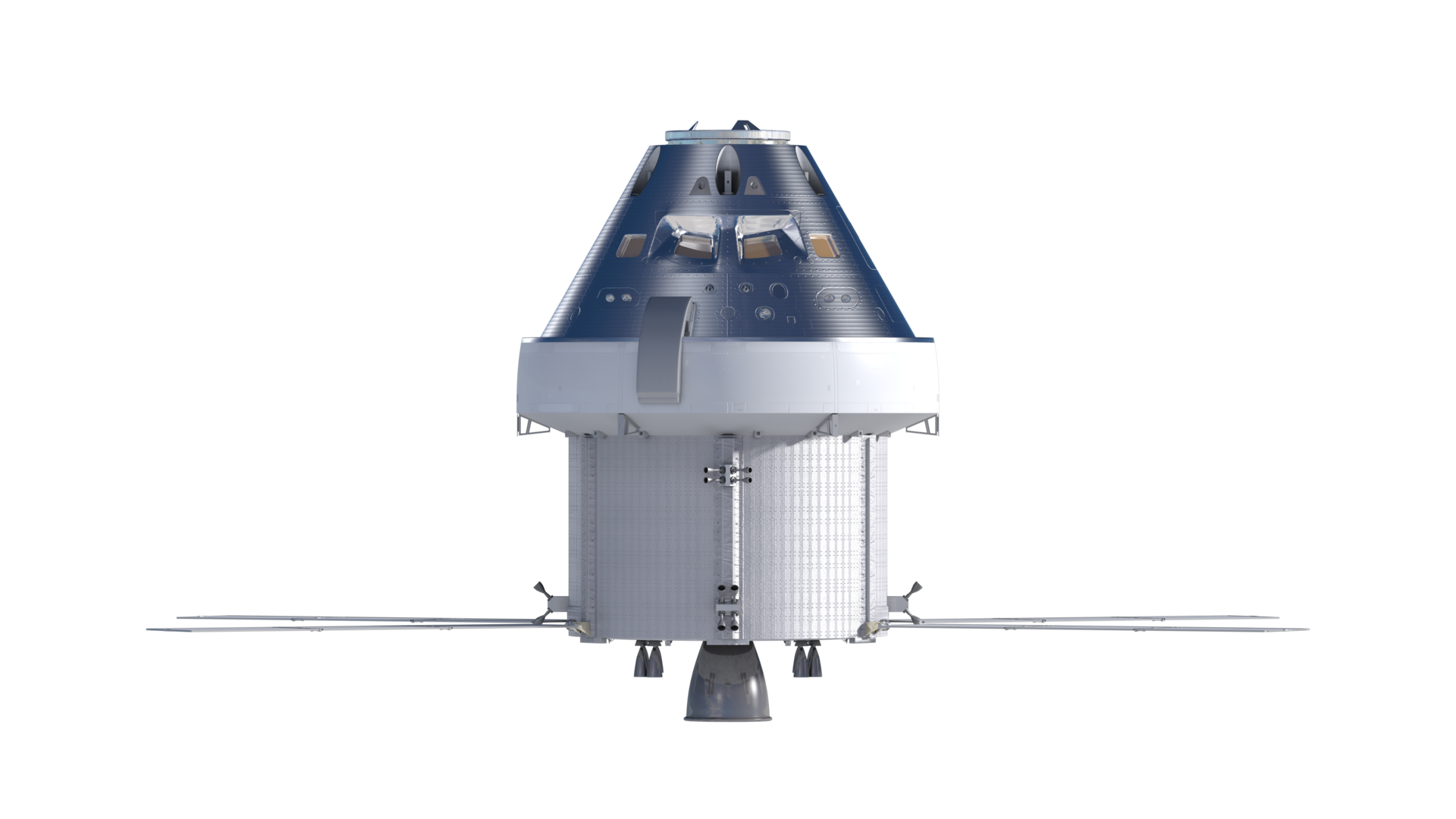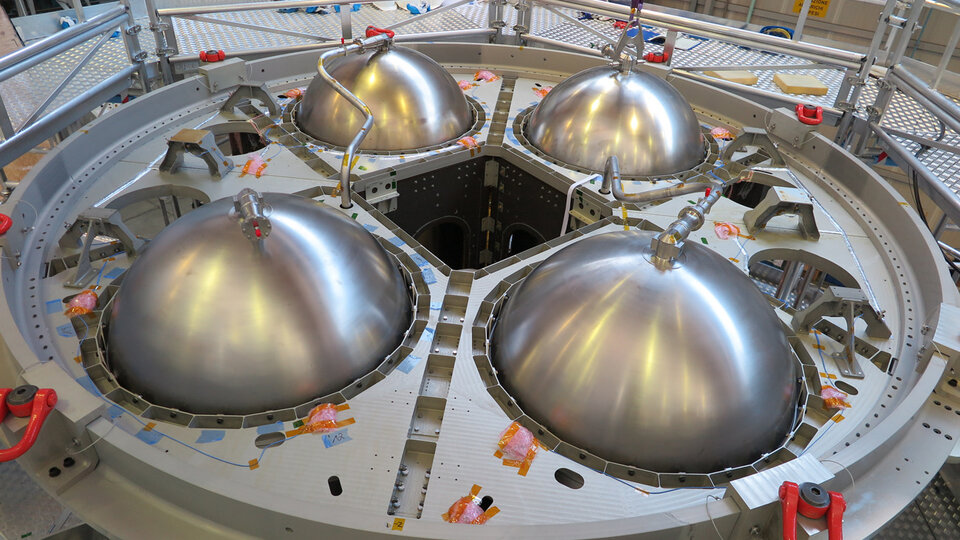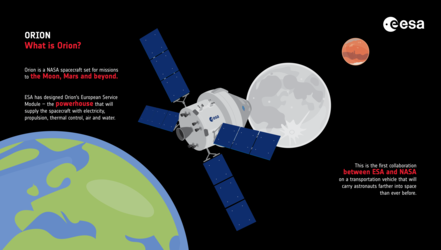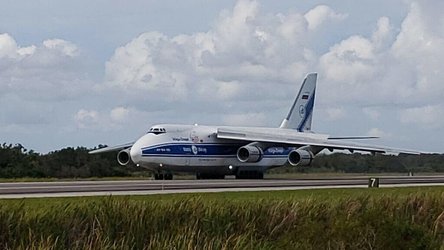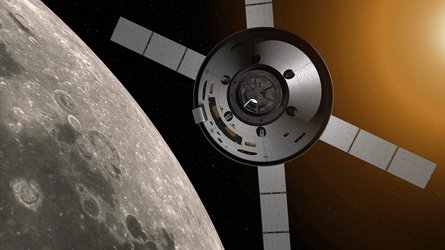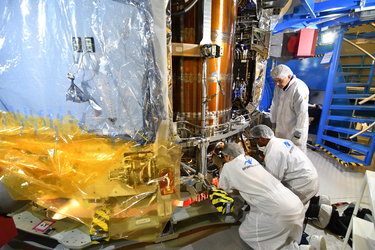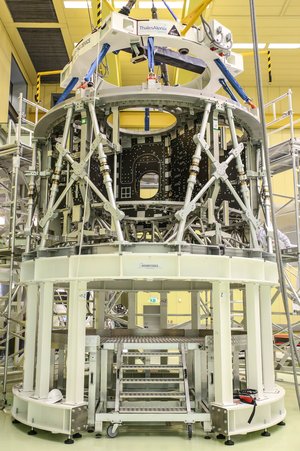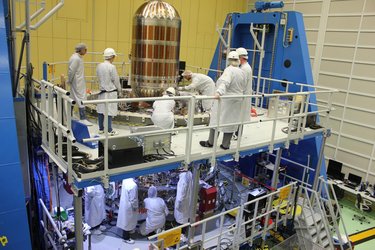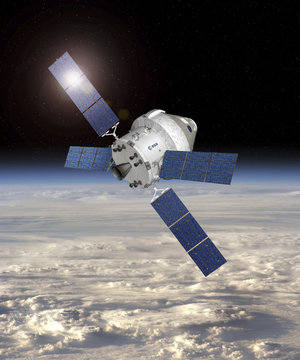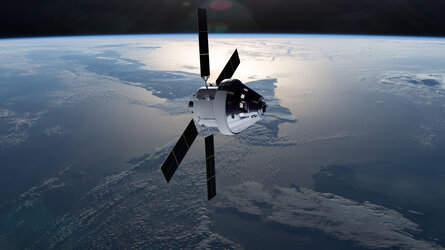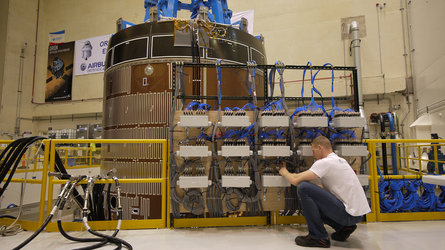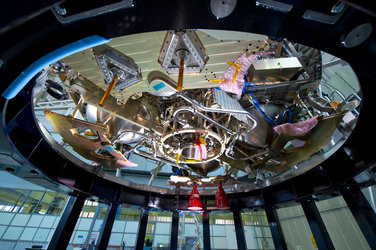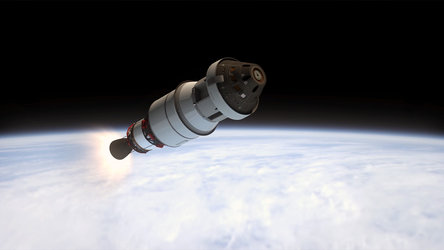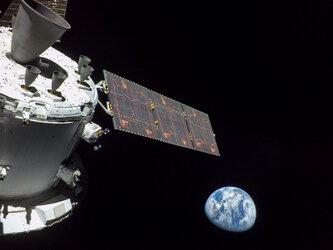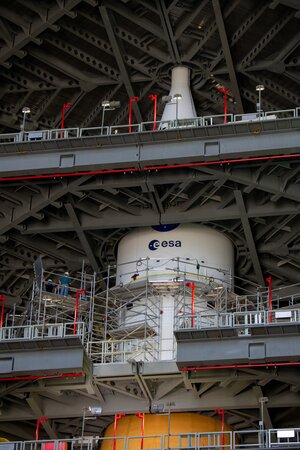Propulsion
Once the Orion spacecraft has escaped the clutches of Earth’s gravity, it will rely on the engines of ESA’s service module to navigate and orient itself in space.
A total of 33 engines of three types provide thrust to manoeuvre the spacecraft on all axes.
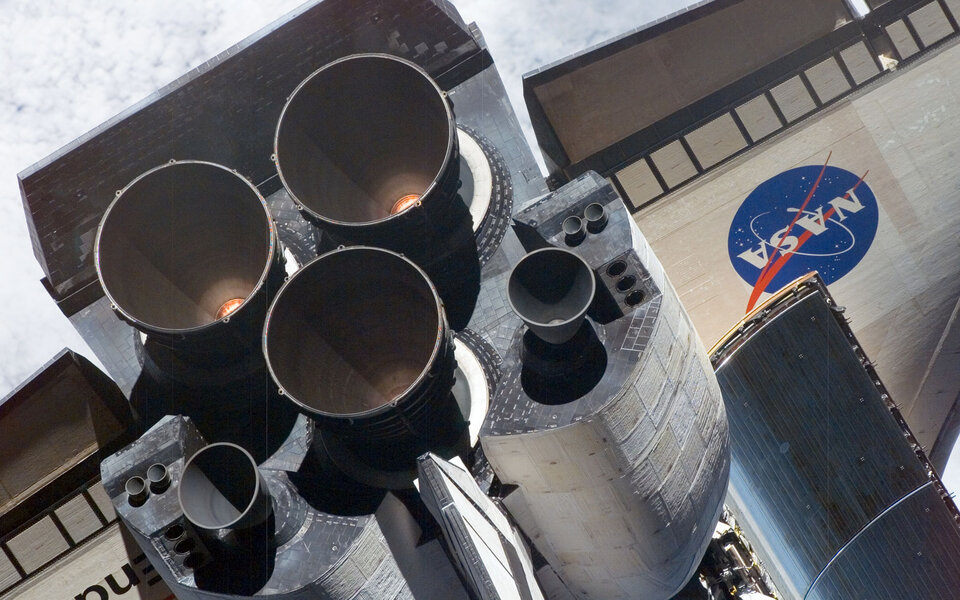
The main engine on the first mission is a repurposed Space Shuttle Orbital Maneuvering System engine that has flown in space before.
This engine provides 25.7 kN, enough to lift a van, and can swivel in pitch and yaw.
Eight thrusters are placed as a backup and provide 490 N each – enough to lift 50 kg on Earth. These are fixed at the bottom of the Service Module to provide orbit corrections and as a backup to the main engine.
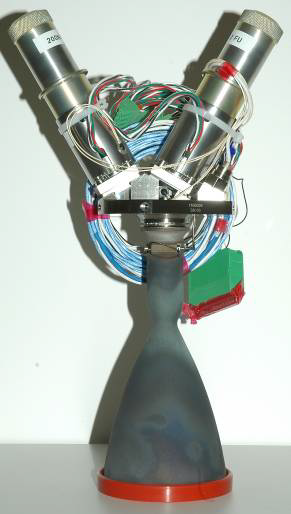
Lastly, 24 smaller engines grouped into six pods provide attitude control. In fixed positions, they can be fired individually as needed to move the spacecraft in different directions and rotate it into any position.
The propellant is provided by four 2000-liter tanks with 1-cm thick walls inside the service module: mixed oxides of nitrogen (MON) as oxidiser and monomethyl hydrazine (MMH) as fuel. The tanks will hold the fuel at a pressure of 25 bar with a total capacity of nine tonnes of fuel. Helium from two tanks push the propellants into the engines.
The European Service Module also kicks into action in the event of a launch abort. Orion sits underneath the Launch Abort System that propels the crew capsule up and away from danger if needed during the initial phases of launch, returning it to the ground by parachute. At altitude the Launch Abort System is jettisoned and if problems arise then the service module takes over and takes Orion from its launcher and steers it towards a safe return to Earth.
Technical details:
- Three engine classes
- A single Space Shuttle Orbital Maneuvering System engine provides 25.7 kN; gimballed in pitch and yaw
- Eight fixed 490 N auxiliary thrusters, model R-4D-11 built by Aerojet
- Reaction Control System 220 N engines, in six pods of four by ArianeGroup
- Four propellant tanks
- 2000 l capacity each
- Diameter 1154 mm; height 2542 mm
- Pressurised at 25 bar
- Two with mixed oxides of nitrogen (MON)
- Two with monomethyl hydrazine (MMH)
- Nine tonnes fuel total capacity
- Surrounding structure
- Two high-pressure helium tanks
- Pressure-control systems
- Sensor system with drive electronics
- Propellant lines with shut-off valves
- Filters















 Germany
Germany
 Austria
Austria
 Belgium
Belgium
 Denmark
Denmark
 Spain
Spain
 Estonia
Estonia
 Finland
Finland
 France
France
 Greece
Greece
 Hungary
Hungary
 Ireland
Ireland
 Italy
Italy
 Luxembourg
Luxembourg
 Norway
Norway
 The Netherlands
The Netherlands
 Poland
Poland
 Portugal
Portugal
 Czechia
Czechia
 Romania
Romania
 United Kingdom
United Kingdom
 Slovenia
Slovenia
 Sweden
Sweden
 Switzerland
Switzerland

























